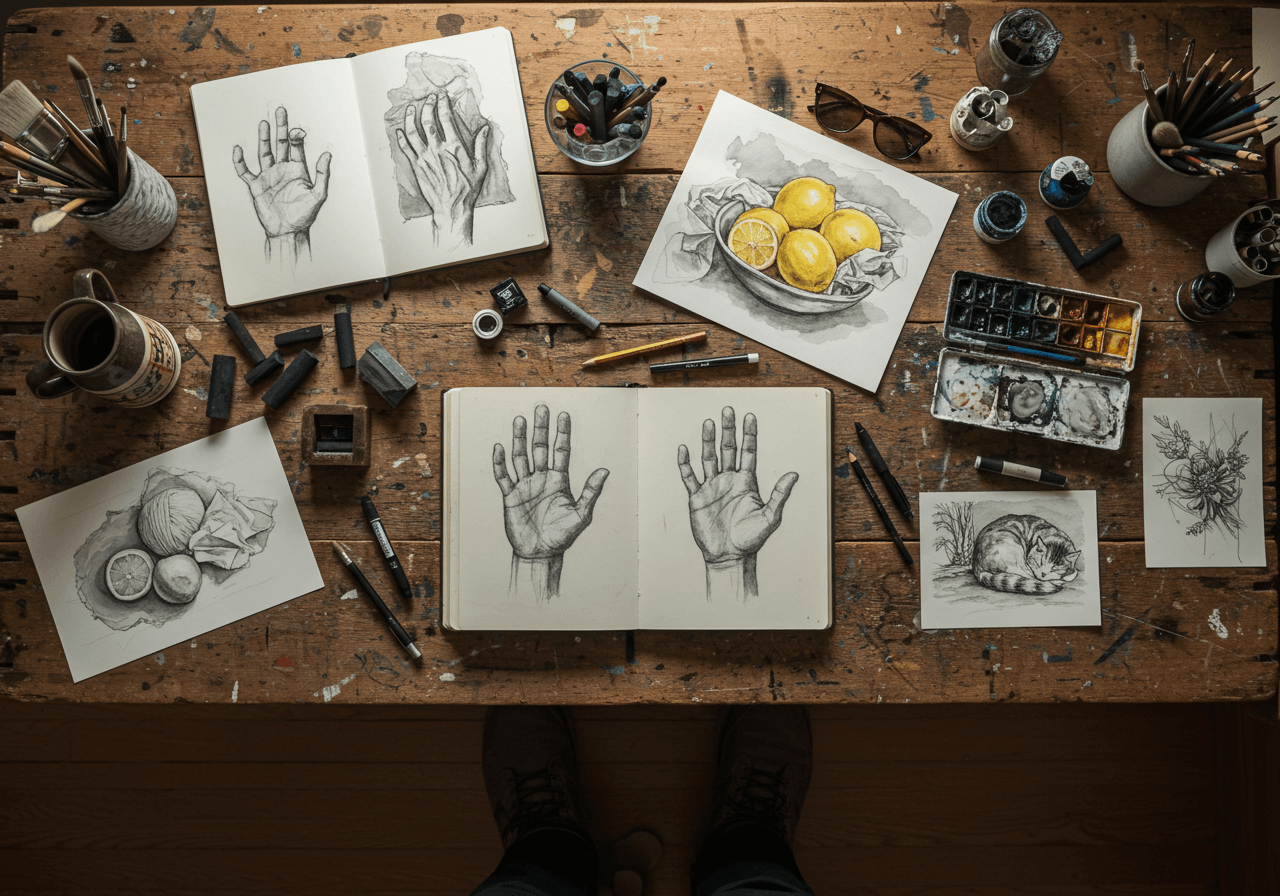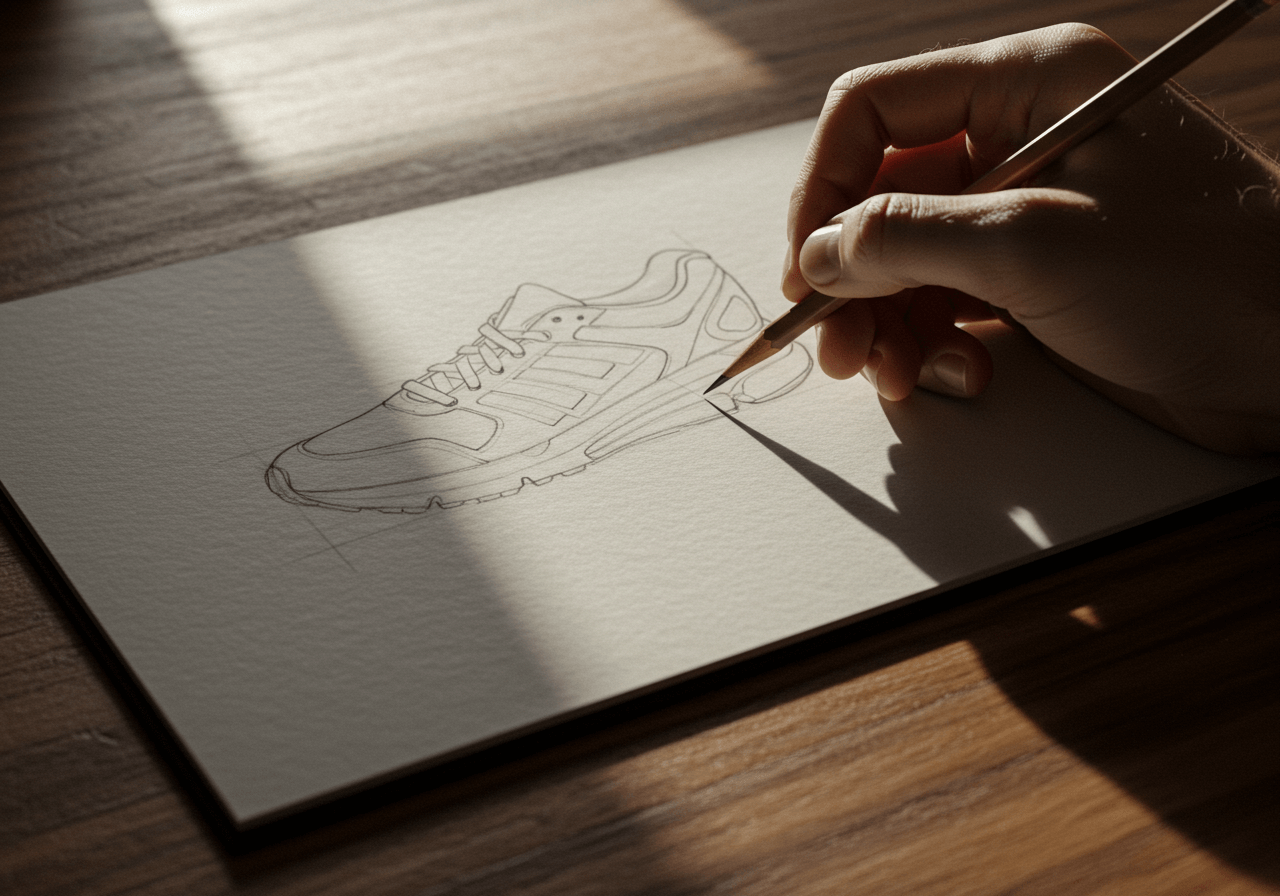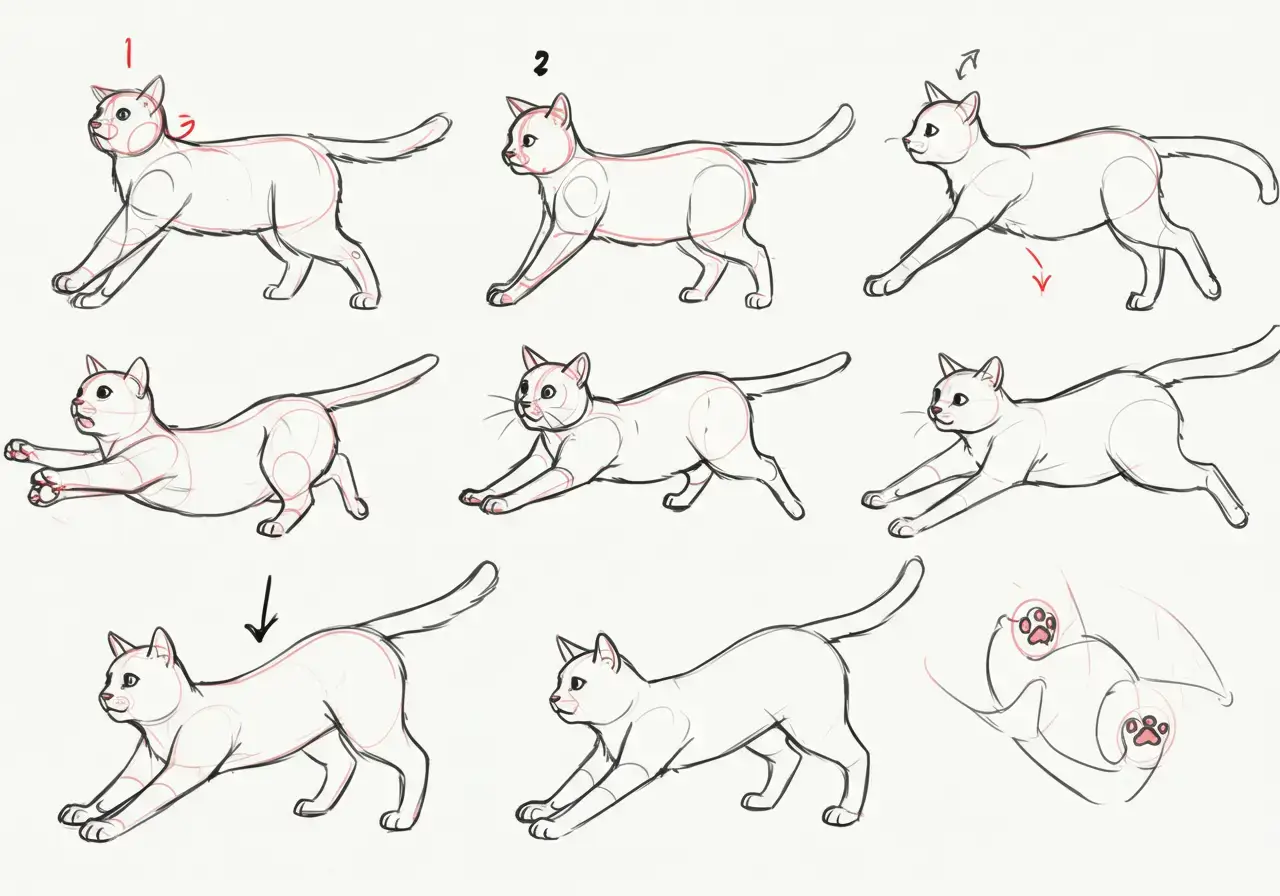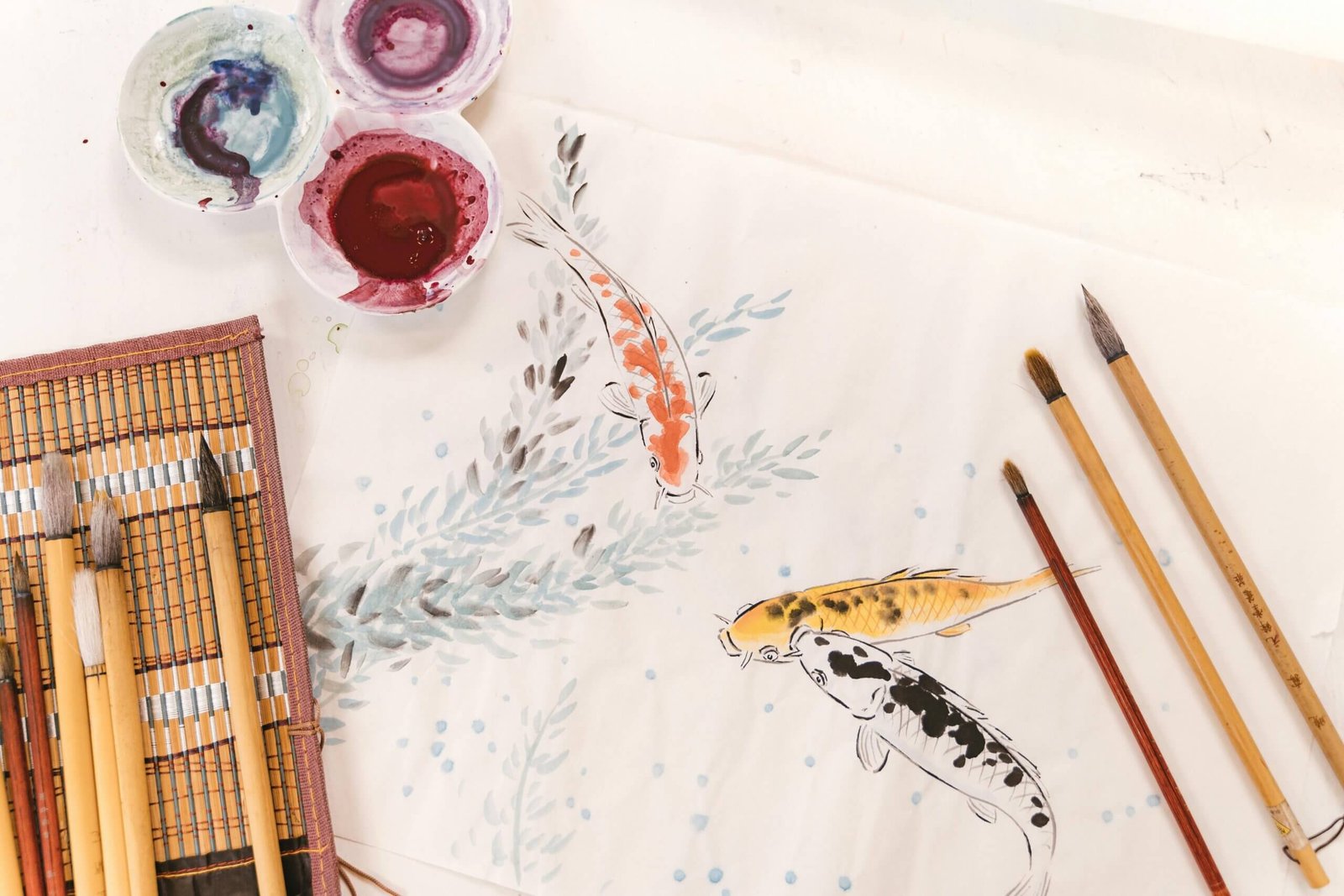The Best Drawing Reference Resources for Artists
Hey there, fellow art enthusiast! Ever find yourself staring at a blank canvas or digital tablet, brain absolutely devoid of drawing reference poses? Yeah, me too. It’s a classic artist’s dilemma: you’ve got a fantastic idea, but translating that dynamic vision onto paper feels like trying to catch smoke. How do you get that hand just right? Or make sure your character isn’t awkwardly defying gravity? That’s where the magic of drawing reference poses comes in, and trust me, they’re not just for beginners! Even the pros lean on them. This isn’t about tracing or copying; it’s about learning, understanding, and ultimately, creating something uniquely yours. Think of references as your artistic GPS, guiding you to your destination without dictating the scenic route you take.
In this super engaging and incredibly useful guide, we’re going to dive deep into where to find the best reference sites for art, how to use them effectively, and even dish out some killer artist improvement tips. So, grab your coffee (or your favorite drawing beverage), settle in, and let’s unlock your full artistic potential together!
Table of Contents
Why Bother with Drawing Reference Poses Anyway? Don’t I Just Draw from My Head?
Oh, the age-old debate! “Real artists draw from imagination!” And while that’s partially true, even the old masters studied anatomy, draped fabric, and actual people for their masterpieces. Drawing reference poses aren’t a crutch; they’re a ladder to a higher level of understanding.
The Truth About Drawing from Imagination Alone
Drawing solely from your head is awesome for stylistic choices and sparking initial ideas, but it can quickly lead to wonky proportions, stiff figures, and a whole lot of head-scratching. Our brains are fantastic at recognizing patterns and general shapes, but they’re surprisingly bad at recalling precise anatomical details or complex foreshortening on demand. Trying to draw a dynamic action pose without any reference is like building a house without a blueprint – it might stand, but it’s probably not going to be structurally sound or look very appealing.
The Benefits of Using Drawing Reference Poses
Using drawing reference poses is like giving your brain a cheat sheet. It helps you:
- Master Anatomy and Proportion: See how muscles flex and bones connect in real life.
- Understand Foreshortening: That notoriously tricky skill of making objects appear shorter when angled towards the viewer? References are your best friend here.
- Capture Dynamic Action: How does a body twist, jump, or balance? Actual references show you!
- Build Your Visual Library: The more accurate references you study, the richer and more detailed your mental catalog becomes, eventually making it easier to draw from imagination.
- Boost Confidence: Fewer frustrating “this looks wrong” moments mean more joyous “nailed it!” moments.
Think of it as filling your creative fuel tank. The more accurate visual information you take in, the more fuel you have for your own unique creations. This is a game-changer for artist improvement tips!
Where to Find the Gold: Best Reference Sites for Art
Alright, enough preamble! You’re here for the goods. Let’s talk about the best reference sites for art out there that will supercharge your drawing reference poses game. We’re talking about high-quality, diverse, and often free resources that you absolutely need in your toolkit.
1. Posemaniacs: The Classic for Figure Study
If you’ve been in the art community for a hot minute, you’ve probably heard of Posemaniacs. It’s a classic for a reason!
What’s great about it:
- 30-Second Drawing Sessions: This is a fantastic exercise for quickly capturing gestures and improving speed. It throws random poses at you, forcing you to make quick decisions.
- Tons of Poses: Hundreds of anatomically sculpted 3D models with various muscle definitions.
- Anatomy Focus: Great for really zeroing in on musculature and how it contorts.
- Price: Free! (Can’t beat that, right?)
My take: It’s super effective for gesture drawing and understanding form quickly. The models are stylized to emphasize musculature, which is fantastic for learning anatomy, though maybe not always for super realistic clothing drape.
2. Anatomy 360: Detailed & Dynamic Renders
Anatomy 360 takes things up a notch with incredibly detailed 3D models and high-quality photo packs.
What’s great about it:
- High-Resolution Renders: Seriously crisp images you can zoom into.
- Diverse Pose Packs: From action to relaxed, they have a huge library. They even have dynamic figure drawing packs, which are super popular among artists looking for complex drawing reference poses.
- Anatomy Scans: They offer actual anatomical scans, which is next level for understanding structure.
- Price: Freely browseable, but the high-res photo packs and 3D models are a paid product. Think of it as an investment in detailed drawing references poses.
My take: If you’re serious about nailing human anatomy and want professional-grade resources, Anatomy 360 is worth exploring. Their individual pose packs are often very affordable for the quality you get.
3. Pinterest: The Ultimate Visual Scrapbook
Okay, Pinterest isn’t just for recipes and wedding ideas, people! It’s an absolute goldmine for drawing reference poses and general visual inspiration.
What’s great about it:
- Endless Variety: Seriously, you can find anything here: specific actions, emotional expressions, clothing references, cultural styles, you name it.
- Curated Boards: Artists often create public boards dedicated to specific types of poses (e.g., “Dynamic Action Poses,” “Hand References”). Just type in what you’re looking for!
- Visual Search: Upload an image and Pinterest will find similar ones – super handy!
- Price: Free!
My take: Pinterest is my go-to for general inspiration and specific niche drawing reference poses. Pro tip: Create your own private boards to organize your favorites. Searching for things like “fantasy character pose reference” or “swordsman pose” will yield fantastic results.
4. DeviantArt & ArtStation: Created by Artists, for Artists
These platforms are communities of artists, and that means a treasure trove of resources shared by talented creatives.
What’s great about them:
- Direct Interaction: Sometimes artists share their own models or photo packs they’ve shot specifically for drawing reference poses.
- Diverse Styles: You’ll find everything from realistic to highly stylized characters.
- Process Sharing: Many artists also share their process or studies, which doubles as great learning material.
- Price: Mostly free to browse; some artists offer paid packs.
My take: These sites are fantastic for finding specialized drawing reference poses that might not be available elsewhere. Plus, you get to support fellow artists!
5. Google Images: The Obvious, But Smart Way
Don’t underestimate the power of a good old Google search!
What’s great about it:
- Specificity: You can search for extremely niche drawing reference poses like “person jumping fence” or “man lifting heavy box.”
- Real-World Context: Get references from actual photos, giving you a sense of realistic lighting, clothing drape, and environment.
- Price: Free!
My take: Use specific keywords. Instead of “poses,” try “action pose reference,” “figure drawing model,” or even “photograph of person fighting.” The more detailed, the better your results.
6. Quickposes: Timed Figure Drawing Practice
Similar to Posemaniacs but with a slightly different interface and often more realistic human models.
What’s great about it:
- Customizable Sessions: You can choose the duration, model gender, pose type (gesture, action, nude, clothed, etc.).
- Actual Photos: Uses real photographs, which helps with understanding skin tones, lighting, and natural forms.
- Good for Speed and Accuracy: Excellent for practicing quick sketches and honing your observational skills for drawing reference poses.
- Price: Free!
My take: Quickposes is fantastic for daily warm-ups and general artist improvement tips. The variety of poses and customization options make it a powerful tool.
7. Human-Art.com (and similar photo pack sites): When You Need Specificity
Sites like Human-Art or even stock photo sites (if you’re willing to buy) offer incredible photo packs.
What’s great about them:
- Thematic Poses: Often grouped by theme (e.g., “Warrior Poses,” “Sitting on Furniture,” “Emotional Expressions”).
- Consistent Lighting: Poses within a pack often have consistent lighting, which is a huge plus.
- Multiple Angles: Photos of the same pose from various angles, allowing you to rotate the figure in your head.
- Price: Paid. This is where you invest in high-quality, specific drawing reference poses. Your average drawing reference poses costs about $20-50 for a pack, which isn’t bad for potentially hundreds of photos.
My take: If you have a specific project or type of character in mind, these paid packs are often worth their weight in gold. They save you a ton of time searching.
Beyond Still Images: The Power of Video References
Sometimes, a still image just doesn’t cut it, especially for complex motion. This is where video references come in!
- YouTube: Search for things like “fight choreography,” “dance videos,” “parkour slow motion,” or even just “people walking.” Pause the video at key frames to capture dynamic drawing reference poses.
- Your Own Camera: Don’t underestimate acting out poses yourself or getting a friend to! Take photos or video. This gives you exactly the angle and action you need.
How to Actually Use Drawing Reference Poses (So You Don’t Just Trace!)
Knowing where to find drawing reference poses is only half the battle. The other half is knowing how to use them effectively without becoming a human tracing machine. This is crucial for genuine artist improvement tips.
1. Understand, Don’t Copy
This is the golden rule. Look at the reference and ask yourself:
- Why is that arm bent that way?
- What muscles are contracting?
- How does the weight shift?
- What’s the overall gesture or line of action?
Don’t just draw what you see; draw what you understand.
2. Gesture First, Details Later
Start with a quick, loose gesture drawing to capture the energy and flow of the pose. Think stick figures, squiggly lines, and basic shapes. Don’t worry about perfection at this stage. This helps you internalize the pose’s core dynamism before getting bogged down in anatomy. For this, timed sessions on Posemaniacs or Quickposes are fantastic.
3. Break it Down into Simple Shapes
Think in terms of basic geometric forms:
- Head: Sphere
- Torso: Box/Cylinder
- Limbs: Cylinders/Tubes
- Hands/Feet: Wedges/Blocks
This simplification helps you place everything in 3D space.
4. Focus on Proportions and Landmarks
Pay attention to how different body parts relate to each other in terms of size and placement.
- “How many heads tall is this figure?”
- “Where does the elbow line up with the navel?”
- “How long is the forearm compared to the upper arm?”
Identifying key anatomical landmarks (shoulders, hips, knees, elbows) acts like a skeleton to build your drawing upon.
5. Isolate and Study Difficult Areas
Hands, feet, and faces are notoriously tricky. If you’re struggling, find specific references just for those parts. A quick search for “hand drawing references” or “foot poses” can save you hours of frustration.
6. Combine References
Don’t be afraid to mix and match! Maybe you like the torso of one pose, the arms from another, and the head tilt from a third. This is where your artistic voice starts to truly emerge, and your drawing reference poses become building blocks.
7. Draw It, Then Draw It Again (Without The Reference)
After you’ve done a study with the reference, try drawing the same pose from memory. This helps solidify your understanding and moves the information from short-term memory into your visual library. This practice is one of the most effective artist improvement tips you can implement.
Avoiding Common Pitfalls: Drawing Reference Poses Don’ts
- Don’t Rely Solely on One Angle: If you only ever draw a character from the front, you’ll never learn how to portray them convincingly from other angles.
- Don’t Trace Unless for Learning: Tracing can be useful for understanding clean lines or proportions, but it won’t teach you how to construct a figure from scratch. Use it sparingly and consciously as a learning tool, not as a shortcut to finished art.
- Don’t Get Stuck on “Perfect” References: Sometimes, you can spend more time searching for the ideal reference than actually drawing. Good enough is often good enough to get started.
- Don’t Forget the Story/Gesture: A technically perfect anatomical drawing can still feel stiff if it lacks a sense of emotion or movement. Always aim to capture the gesture first.
FAQs: Your Burning Questions About Drawing Reference Poses Answered!
Q1: Is it really okay to use references? Doesn’t that mean I’m not a “real” artist?
Absolutely, 100% okay! Every single professional artist I know uses references, from concept artists at major studios to gallery-level painters. Using references isn’t cheating; it’s smart learning and an essential part of the artistic process. It demonstrates a commitment to accuracy and continuous artist improvement tips. Think of it this way: a chef uses recipes and tastes ingredients, right? They don’t just magically know everything without any guidance.
Q2: How many references should I use for one specific drawing?
It totally depends on your drawing! For a complex piece, you might use several: one for the main pose, another for a tricky hand gesture, a third for a specific facial expression, and even more for clothing folds, props, or background elements. Don’t limit yourself to just one; combine them to build your unique scene. The average artist uses anywhere from 1 to 10+ drawing reference poses for a single illustration.
Q3: What if I can’t find the exact pose I need?
This is where creativity comes in!
- Combine elements: Take the torso from one pose, the legs from another, and adjust.
- Act it out: Seriously, get up and try the pose yourself, or ask a friend! Snap a quick photo.
- Use 3D models: Many of the best reference sites for art offer 3D models you can manipulate to get the exact angle and pose you envision.
- Simplify: If a detail is missing, can you simplify it or suggest it rather than explicitly draw it?
Q4: How long should I spend studying references before I start drawing?
For gesture practice, a few seconds to a minute per pose is ideal. For more detailed studies or complex poses, you might spend 5-15 minutes really analyzing the reference before you put pencil to paper. The goal isn’t to procrastinate, but to truly see and understand what you’re about to draw. Don’t rush the observation!
Q5: Can I use references for commercial art? What about copyright?
This is a really important question about drawing reference poses and an important artist improvement tip. Generally, real-world photos (especially those of people) have copyright. If you’re using references for learning and practice, it’s usually fine. If you’re creating art to sell commercially, be cautious:
- Stock Photos: If you buy a license for stock photos, you’re usually good.
- Royalty-Free: Look for royalty-free reference packs or images specifically provided for artists to use commercially.
- Transformative Use: If your artwork is transformative enough (meaning it is significantly different from the reference and adds your own creative input), then it’s generally safer. However, always err on the side of caution. Personal photos you take, or 3D models you pose, are usually risk-free. When in doubt, research the specific copyright of your source or create your own! It’s better to be safe than sorry, especially when revenue is involved.
Wrapping It Up: Your Artistic Journey Starts Now!
Phew! We’ve covered a lot, haven’t we? From the philosophical “why” of using drawing reference poses to the practical “where” to find the best reference sites for art, and the all-important “how” to use them effectively for genuine artist improvement tips.
Remember, your artistic journey is a marathon, not a sprint. Every time you consciously use a reference to understand anatomy, a dynamic action, or simply a nuanced expression, you’re leveling up your skills. It’s about building that visual library, training your eye, and giving your imagination the tools it needs to truly soar.
So go forth, explore these fantastic resources, and don’t be afraid to experiment. Your next masterpiece is just a reference pose away! Keep creating, keep learning, and most importantly, keep having fun with it. Happy drawing!




